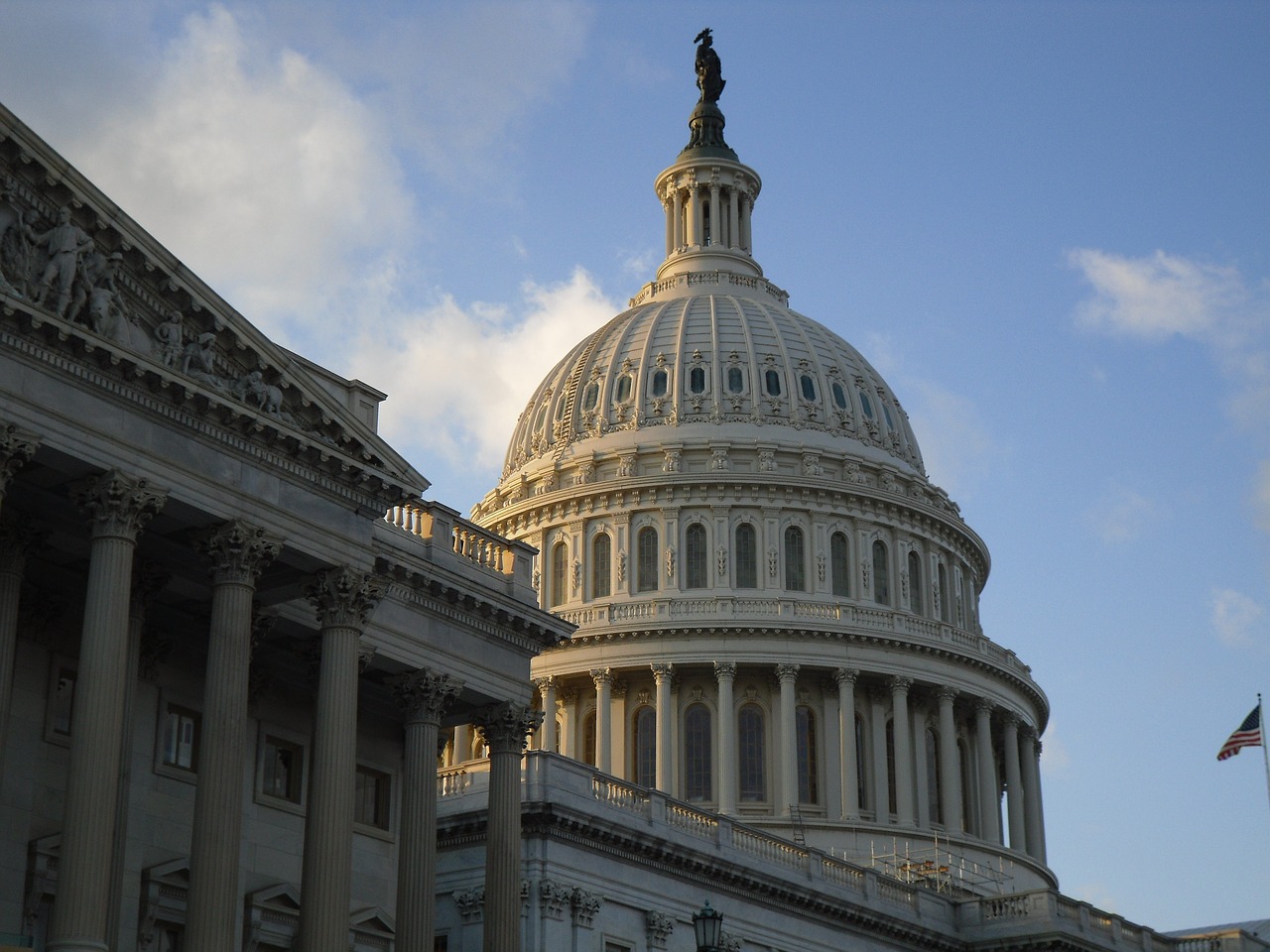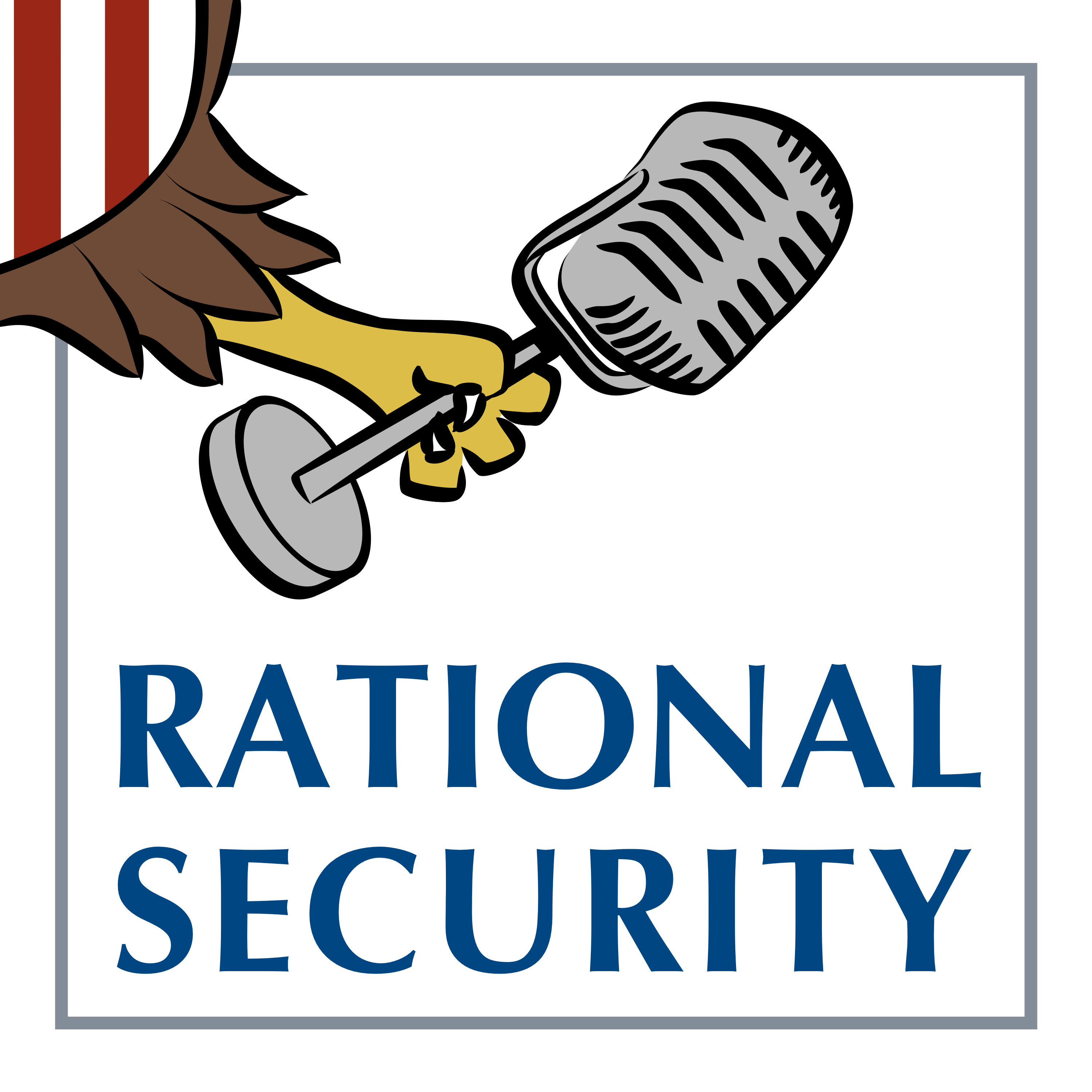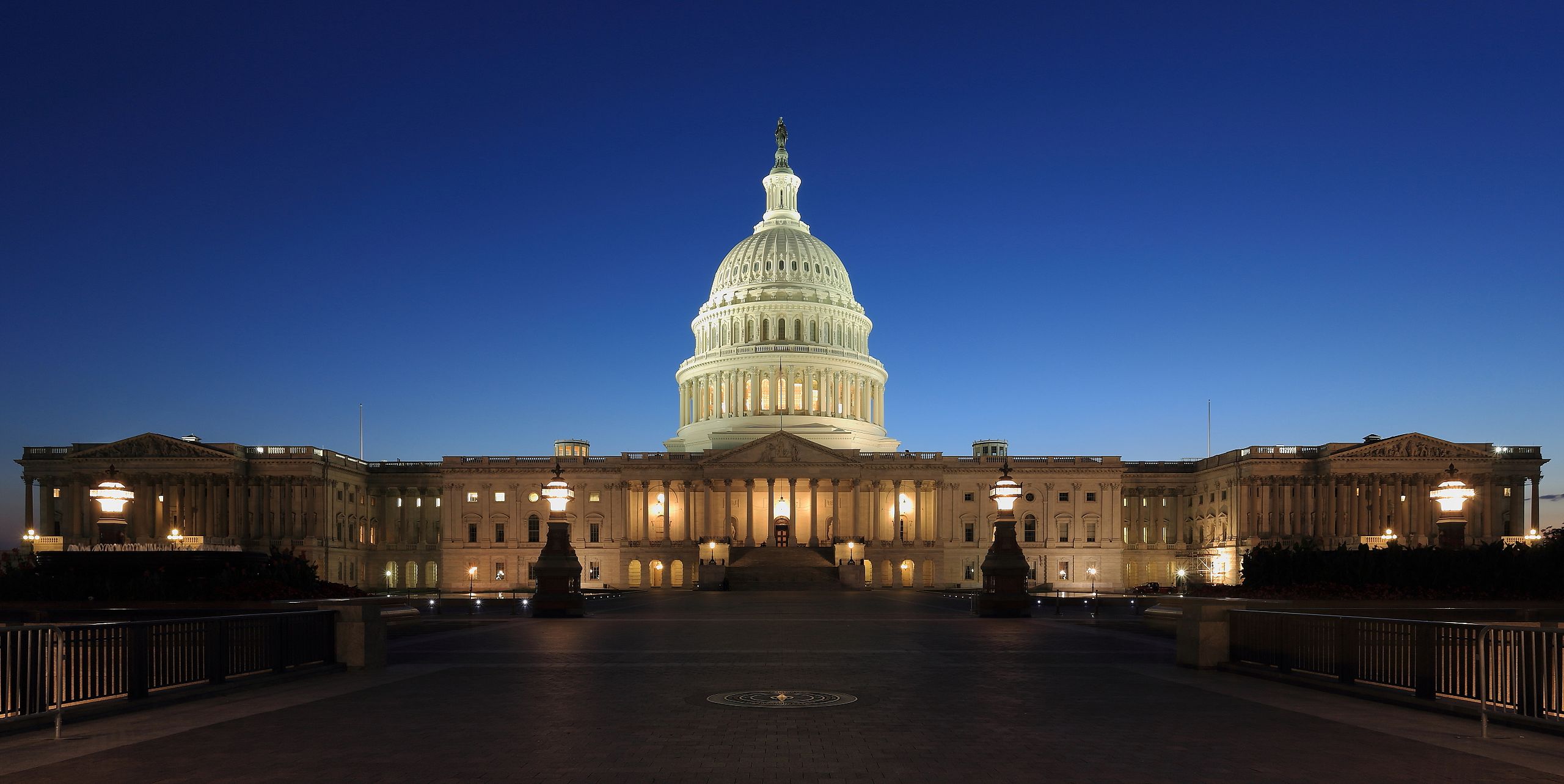Defining ‘Rebellion’ in 10 U.S.C. § 12406 and the Insurrection Act
Congress has a duty to precisely define the conditions that trigger a president’s emergency use of the military on American soil.

Published by The Lawfare Institute
in Cooperation With

In California Gov. Gavin Newsom’s June 9 lawsuit against President Trump—calling for the reversal of the federalization of the state’s National Guard—a little-known federal law, 10 U.S.C.§12406, has suddenly become the center of a legal and political controversy over the extent of a president’s power to use the military domestically. Ultimately, disposition of the merits of the case, as explained by the U.S. Court of Appeals for the Ninth Circuit’s recent order granting Trump’s motion for a stay of the district court’s temporary restraining order (TRO), will turn on the extent to which the judiciary defers to the president’s discretionary judgment that such extraordinary powers are justified by the facts.
That deference hinges, however, on the president’s good-faith and honest interpretation of these facts. Therein lies the problem: Whether the president makes, according to the appellate court, a “colorable assessment of the facts and law within a range of honest judgment” depends on whether those facts meet the statutory predicate conditions, like the existence of a “rebellion.” Congress, however, has not defined those predicate terms—making it difficult to imagine a scenario in which a court, giving strong deference to the president, concludes that his assessment of the facts is not at least “colorable.” To appreciate why definitions matter in such cases, it is necessary to consider how the judiciary has both created the problem and left a door open for solving it.
In 1827, the U.S. Supreme Court decided a case involving the original precursor to the modern-day Insurrection Act. The Court stated: “Whenever a statute gives a discretionary power to any person to be exercised by him upon his own opinion of certain facts, it is a sound rule of construction that the statute constitutes him the sole and exclusive judge of the existence of those facts.” This apex of deference to presidential fact-finding has been applied regularly to cases involving emergency powers authorized by Congress, and plays a central role in the pending litigation concerning President Trump’s federalization of the California National Guard without the consent of the state’s governor, including the Ninth Circuit’s decision that, at least for now, favors the majority of the administration’s position. In light of the “conventional wisdom” of strong judicial deference to presidential fact-finding under such laws, scholars of presidential power such as Jack Goldsmith and organizations including the Brennan Center have criticized the open-ended, “limitless” discretion afforded by statutes like the Insurrection Act and called for reforms such as time limits and consultation with state authorities and Congress.
Time limits and consultation reforms are necessary—but they are not sufficient. When a federal law grants a president extraordinary executive powers accessible only when certain factual conditions arise, Congress also has a normative duty to explain the key terms establishing those necessary exigent conditions, not just list a menu of possible exigencies. If it doesn’t, Congress abdicates its ability to influence the fair execution of the law and curb excessive presidential power. Failure to explain those terms permits the president to decide, at his sole unfettered discretion, not only whether those exigencies justify the use of the power but also what qualifies as “exigent” in the first place. In Goldsmith’s words, it is “just something that’s very out of whack.” This should be considered unacceptable to a Congress concerned about demarcating and flexing its own constitutional authorities as a co-equal branch of government.
I have argued previously that undisciplined rhetorical use of certain legal claims by political actors predictably risks inflaming public passions and distorts the meaning of the law. Here, I argue that a similar misuse of legal doctrine and terms, left undefined by statute, enables presidents to justify dangerous uses of executive power—such as the deployment of military troops in response to criminal activity best policed by police themselves. The Trump administration has taken liberal advantage of definitional vacancies; its use of the term “rebellion” echoes the administration’s regular deployment of other inflammatory labels divorced from their legal meaning, like “treason” and “invasion.” The misuse of “rebellion” can and should be prevented by thoughtful statutory definition, using existing criminal statutes covering related (but unequal) conduct, like “seditious conspiracy,” as guideposts.
Invoking Section 12406
On June 7, in response to the violent and nonviolent protests against Immigration and Customs Enforcement (ICE) raids and arrests in Los Angeles, President Trump used his unfettered discretion to invoke an emergency power under 10 U.S.C. § 12406 when he signed a memorandum federalizing 2,000 troops of the California Army National Guard for 60 days “or at the discretion of the Secretary of Defense.” Trump characterized the protests and violence as a “form of rebellion against the authority of the United States.” He most likely did this not only for its rhetorical value but also because doing so was necessary to invoke § 12406.
This authority to use the National Guard—against the will of the Guard’s own state governor—has three exigent conditions that may trigger it. Each exigency or problem constrains the type of mission the military may execute under its auspices. The first possible exigent condition is when “the United States, or any of the Commonwealths or possessions, is invaded or is in danger of invasion by a foreign nation.” The Guard’s mission, quite sensibly, would be to “repel” that invasion. The second condition is when there is “a rebellion or danger of a rebellion against the authority of the Government of the United States”; the mission would be to “suppress” that rebellion. The third possible exigency is when the “the President is unable with the regular forces to execute the laws of the United States.” The mission then is simply—if not vaguely—to “execute the laws.”
Unlike his earlier proclamation invoking the wartime Alien Enemies Act, Trump did not rely here on a claim of “invasion”; instead, he seems to have combined the factual predicates of the other two conditions: “to the extent that protests or acts of violence directly inhibit the execution of the laws, they constitute a form of rebellion against the authority of the Government of the United States.”
In a troubling escalation of rhetoric, President Trump, Vice President Vance, and Deputy White House Chief of Staff Stephen Miller have since called the protests an “insurrection” or the protesters “insurrectionists,” suggesting it is synonymous with “rebellion.” And there are reports of protesters being temporarily detained by Marines and troops accompanying ICE on raids and arrests, suggesting that the military has taken on a law enforcement role that may violate the Posse Comitatus Act’s prohibition. But Trump has not yet invoked the Insurrection Act to unlock its copious authorities for using the military in a much broader law enforcement capacity against the wishes of the state’s own government. The military’s mission in Los Angeles, at least on paper, is limited to force protection: “to temporarily protect ICE and other United States Government personnel who are performing Federal functions, including the enforcement of Federal law, and to protect Federal property, at locations where protests against these functions are occurring or are likely to occur based on current threat assessments and planned operations.”
Shortly after the president published his memorandum, Secretary of Defense Pete Hegseth threatened to deploy active-duty Marines from nearby Camp Pendleton as well—an active-duty mission that would likely be based on a theory of inherent presidential authority to protect federal assets (explained in Lawfare by Chris Mirasola)—one that Gov. Newsom has called “deranged.” On June 9, Trump doubled the number of National Guard troops mobilized, and U.S. Northern Command deployed an active-duty battalion of 700 Marines. That same day, Newsom filed a lawsuit against the administration on grounds that § 12406 requires the governor’s consent before his own state’s Guard is deployed; the district court issued a temporary restraining order, ruling that the federalization of the Guard violated the procedural terms of § 12406 and breached the 10th Amendment of the U.S. Constitution; the Ninth Circuit heard oral arguments on the federal government’s appeal of that order on June 17; on June 19, as mentioned above, the appellate court stayed the district court’s TRO, finding that the president did not exceed his authority by invoking § 12406(3) nor did he violate its procedural requirements. Notably, the court did not “reach” the question of whether the more controversial factual predicate of “rebellion” was satisfied under § 12406(2) as an affirmative answer to § 12406(2) was sufficient.
It is unclear, as Elizabeth Goitein notes, just how § 12406 relates to the Insurrection Act: Previous presidents have “treated §12406 as the technical call-up authority that accompanies the Insurrection Act’s substantive grant of power,” yet Trump has divorced the two in this instance. Nevertheless, Trump’s choice to formally call the riots and violence in Southern California a “rebellion” would technically trigger either set of executive authorities in which traditional military operations are uncomfortably and dangerously blurred with those of traditional law enforcement. (I recently wrote about another example of this blurring at the southern border’s new “national defense area” and “military installation.”) Both emergency laws give the president a legal basis for using the military in unconventional ways on domestic soil against other Americans; both laws’ permissions are triggered by a presidential finding that extraordinary circumstances warrant that unusual use of force, including the existence of a “rebellion.” The claim (which Mirasola calls “unusually weak”) that the facts in Los Angeles indicate a rebellion to justify § 12406 authority is possible only because Congress has so far failed to cabin the meaning of the term.
The Consequences of Ambiguity
The ease with which Trump has cast the lawful protests and violence as a “rebellion against the authority of the United States” is deeply concerning. He makes no distinction between lawful, constitutionally protected assemblages of people speaking out against what they perceive to be unlawful, inhumane, or unfair government action from those actions of some protesters against ICE officers that have turned violent and dangerous: “protests or acts of violence” (emphasis added). This can be read in only one way—according to Trump, nonviolent protests that “directly inhibit the execution of the laws” constitute a “rebellion.” So categorized, these protests permit the president to deploy National Guard troops domestically to “suppress” them.
This rhetoric-turned-legal justification seems like something straight out of the Star Wars Imperial Security Bureau’s handbook, a reference that should not diminish the seriousness and danger of the Trump administration’s actions. The memorandum does not even attempt to describe why the facts in California warrant the label of “rebellion.” For example, how many nonviolent protesters, even if impeding the law, cross the administration’s threshold from mere criminal conduct to that of a rebellion? Is it only in the context of immigration law—and the supposed “invasion” at the border threatening national security—that warrants the label? Nor does the memorandum explain what it means to “inhibit the execution of the law.” Nothing, of course, in § 12406 requires the president to be so careful in telling the public why he’s using this extraordinary power, and nothing in this law defines these terms anyway; as Joseph Nunn from the Brennan Center described, § 12406 is a “troublingly ambiguous statute.”
These questions would not arise if the administration had been more circumspect in its use of rhetorically muscular but factually weak assertions that a “rebellion” exists. And the administration would not be able to assert that such rebellion exists if Congress had been more cautious in defining the term rather than leaving not only the factual determination but also the very definition to the sole discretion of the president—whether for the sake of the Insurrection Act or § 12406.
Defining Rebellion
Though “rebellion” appears in both 10 U.S.C. § 12406 and the Insurrection Act as a predicate exigency, neither statute defines it, leaving courts to interpret it according to traditional modes of statutory construction. Judge Charles Breyer of the Northern District of California did just this on June 12 in his TRO, interpreting “rebellion” by considering four dictionary definitions from 1891 to 1903, the “relevant time for understanding what Congress meant when they passed” the precursor to § 12406 and, by implication, what it means today. According to Breyer’s synthesis of these four definitions, rebellion must be violent, armed, organized, open, and avowed, against the government as a whole, “often with an aim of overthrowing the government rather than in opposition to a single law or issue.” Each of these is a necessary condition, but only together are they sufficient to constitute a rebellion within the meaning of § 12406.
This judicial interpretation may or may not survive the court of appeals review on the merits (as mentioned above, the court skirted the question in its order granting the stay), but it was an appropriate attempt in light of Congress’s failure to define the term first. Not only did Congress not define it in these sections of Title 10, but Congress did not even demand that a particular criminal law has to be violated first. Not even the express crime of rebellion prohibited in Title 18 of the U.S. Code must be proved or even provable before the president’s claim that it exists triggers these emergency executive powers: 18 U.S.C. § 2383 criminalizes any person who “incites, sets on foot, assists, or engages in any rebellion or insurrection against the authority of the United States or the laws thereof, or gives aid or comfort thereto,” but conspicuously does not define the term “rebellion.”
Statutory ambiguity here is somewhat surprising, given that two related and nearby statutes in the same Chapter 115 of Title 18 are far more precise. Section 2381 defines the crime of “treason” and Section 2384 defines “seditious conspiracy.” Treason is defined as levying war against the United States by someone “owing allegiance to the United States,” or a person “adher[ing] to their [the United States’s] enemies, giving them aid and comfort.” As a crime composed of an “intent to betray,” “giving aid and comfort”—as interpreted by the Supreme Court —means “more than merely lending a sympathetic ear” to the adversaries of your own country: It is “an act which weakens or tends to weaken the power ... of the country to resist or to attack the enemies of ... the country.” No American has ever been convicted of treason for conduct that did not directly support a nation-state enemy then at war with the United States. If the U.S. is not in an armed conflict with another belligerent nation, it is legally impossible to be guilty of treason.
Seditious conspiracy, alternatively, is defined as “two or more persons [who] conspire to overthrow, put down, or to destroy by force the Government of the United States, or to levy war against them, or to oppose by force the authority thereof, or by force to prevent, hinder, or delay the execution of any law of the United States, or by force to seize, take, or possess any property of the United States contrary to the authority thereof.” The leaders of the Proud Boys were convicted of seditious conspiracy for their role in spearheading the riot at the Capitol on Jan. 6, 2021, intending to delay the certification of the Electoral College votes that confirmed Joe Biden, not Donald Trump, as the duly elected president.
Congress could cabin the meaning of “rebellion against the authority of the United States” so that it cannot be so easily used to justify invoking the extraordinary protective powers of the president to deploy the military as direct law enforcement (under Section 252 of the Insurrection Act) or to support law enforcement in the manner § 12406 permits. It could do so by finding appropriate language in the criminal code of Title 18, somewhere outside of treason and sedition—in other words, not as a synonym for other expressly defined crimes.
For example, rebellion could reasonably be defined—and distinguished from both treason and sedition—as “an organized, commanded, armed collective effort of sustained resistance to overthrow the current government by unlawful force in order to replace it with an opposing government.” This reflects much of Judge Breyer’s own interpretation based on the term’s presumed public meaning at the turn of the 20th century but also reflects relevant distinctions from the other crimes that are “subversive” of the government but that rely on different means and methods. For example, rebellion defined this way might involve some acts of treason, but treason is not a predicate; it is also both of greater scale and more objective than sedition, requiring a degree of organization and command not necessary to prove sedition and not provable by merely showing an intent to “seize, take, or possess any property of the United States contrary to the authority thereof,” as sedition does.
But Congress need not amend the criminal code of Title 18 to build a hedge against presidential overreach (though a definition there would be helpful too); it simply needs to amend the sections of Title 10 that use “rebellion” as a predicate exigency for invoking extraordinary executive powers. Arguing that “rebellion” in Title 10 should be considered in view of “rebellion” and its criminal cousins (treason and sedition) in Title 18 is supported by at least two canons of statutory construction: the “presumption of consistent usage” canon and the “harmonious-reading” canon. The consistent usage canon, according to notable wordsmiths former Justice Antonin Scalia and Bryan Garner, advises that a “word or phrase is presumed to bear the same meaning throughout a text; a material variation in terms suggests a variation in meaning”—that is, used once in a statute, it should have the same meaning across the statutory scheme. According to the Congressional Research Service (CRS) overview of such canons, “[t]his canon assumes that Congress intentionally uses consistent phrasing across an act, and that any inconsistency is also intentional.” The harmonious-reading canon, according to this CRS report on the “tools” of statutory interpretation, advises that ambiguity in meaning can be resolved by interpreting it in ways that ensure coherence within the statute and compatibility with other related statutory provisions.
These two canons would be directly on point if 18 U.S.C. § 2383 already defined “rebellion” to the same degree that its neighboring related statutes define the elements of “treason” and “sedition.” If that had been the case, Congress could simply adopt the same definition within Title 10. Nevertheless, the canons suggest that any prospective draft definition for the purposes of unlocking § 12046 or the Insurrection Act’s Title 10 authorities should consider how related conduct is defined as criminal for the purposes of prosecution in Title 18.
***
I make no argument here that the perpetrators of armed violence against ICE or federal property do or do not meet the statutory elements of seditious conspiracy, or any other crime like destruction of property, rioting, or assault. What I am claiming is that no reasonable characterization of their conduct—lawfully peaceful or unlawfully violent—rises to any respectable definition of “rebellion” (or “form of rebellion”). Defining a crime is no easy task, but if specified conduct provides the statutory cover for a president invoking authority to use the military to enforce laws or defend law enforcement personnel, then Congress has a responsibility to define what constitutes that conduct. Not only would that provide the public reasonable and fair notice of what conduct is criminal (the “principle of legality” is a standard requirement for a society governed by the rule of law), but it would deter presidents from making groundless claims that, once made, trigger a new set of expansive authorities.
At this point in Trump’s second term, it is irresponsible for Congress to ignore the ease with which this administration (and any future one) can assert, for its own interests, the existence of a “rebellion,” “insurrection,” or even “invasion” divorced from credible and demonstrable facts. The Ninth Circuit is of course correct to note that “Congress still has the prerogative to change the delegation of the calling forth power [in § 12406 or the Insurrection Act], and the nature of judicial review of any exercise of that statutory authority.” But that is not all Congress may do to reclaim its constitutional role in using military force. Without any effort to define such states of emergency, presidents of both parties will continue to swiftly, and without consequence, turn to the extraordinary emergency powers Congress has authorized for their use under circumstances that objectively do not call for them—inflaming violence rather than quelling it.

-2025.jpg?sfvrsn=333295e6_3)



